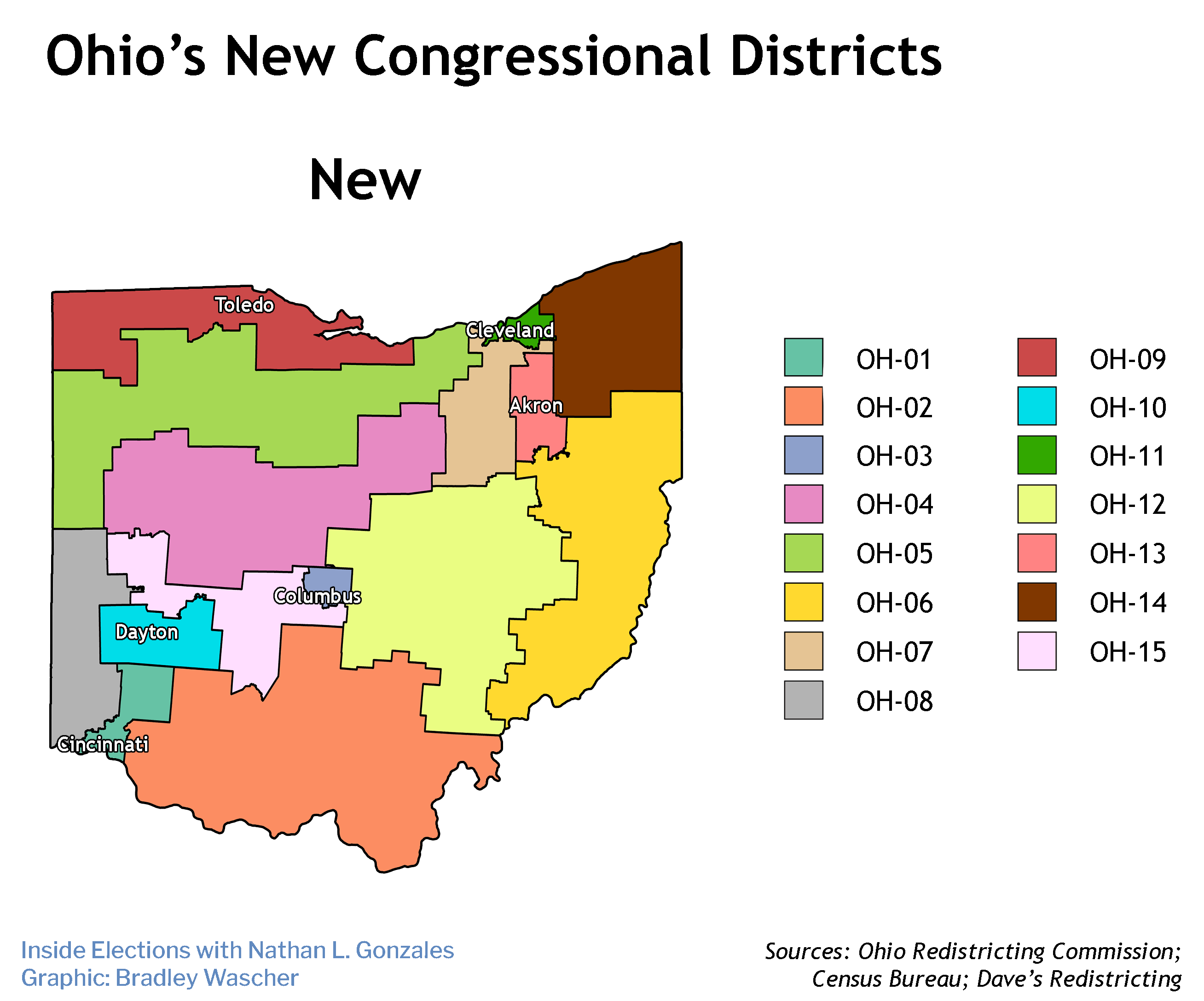Ohio’s redistricting process for the 2022 midterms appears to have ended as it began: messily.
After a tumultuous process that saw the state legislature and a backup commission fail to (or even make a good-faith attempt to) pass bipartisan maps as required by a new state law passed by voters in 2018, the state legislature passed temporary maps on a party-line basis that would have lasted just four years instead of the usual 10.
The Ohio Supreme Court ruled those maps were an unconstitutional Republican gerrymander and tossed them out. But Republicans in the state legislature didn’t budge, and passed another map on a party line vote that was not much different than the invalidated map.
Democrats had hoped the state Supreme Court would strike down the second map as well. They still may, but the Court scheduled arguments for after the state’s May 3 primary, so in all likelihood the new map will be in place for at least the 2022 elections.
And because it was passed on a party-line vote, even if the map survives this legal challenge it will expire after 2024, and the whole process will start again.
Ohio lost a seat during the reapportionment process, dropping from 16 to 15 districts. Currently, the delegation is split between 12 Republicans and 4 Democrats. Under the map likely to be used in 2022, Republicans could win as many as 13 of the state’s 15 seats.

1st District
One bright spot for Democrats in Ohio is the redrawn 1st District. While the old version of the 1st connected Warren County with the non-Cincinnati portions of Hamilton County, the new version connects Warren with Cincinnati proper and the city’s eastern suburbs.
That means...

